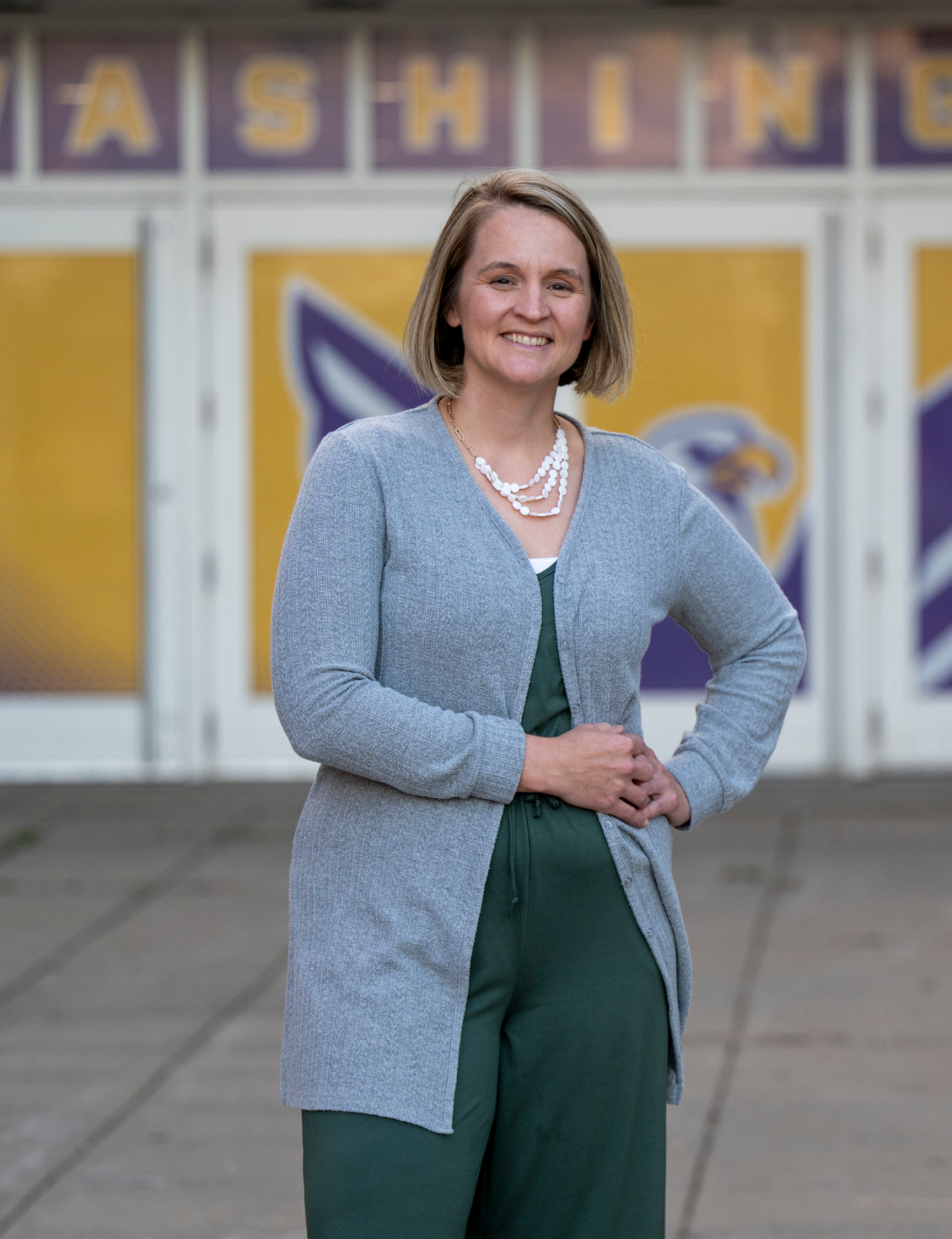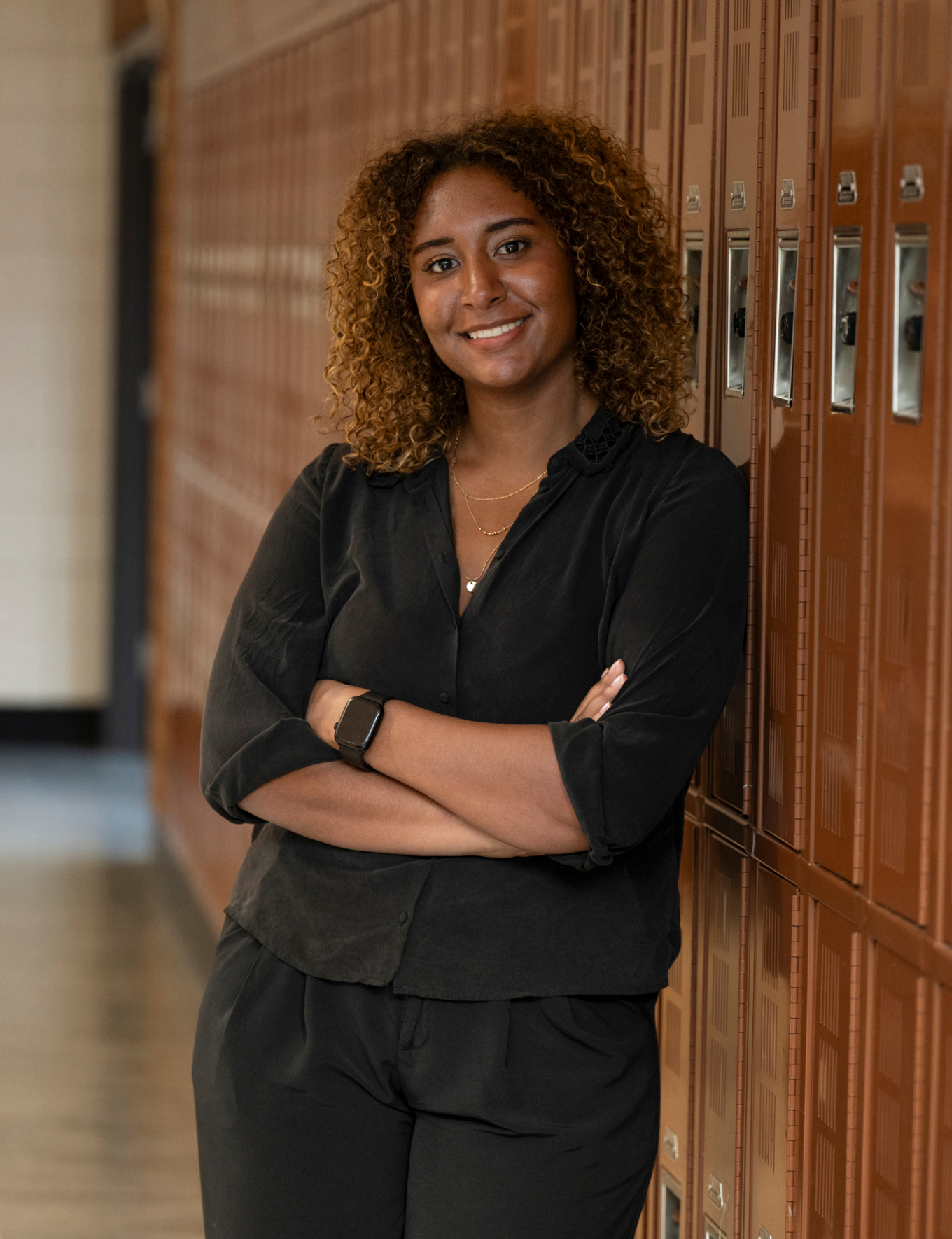2024 Fall

Innovating mental health support in schools
HOW PROJECTS LIME AND AWARE ARE ADDRESSING K-12 MENTAL HEALTH TODAY WHILE PREPARING TOMORROW'S PROFESSIONALS
Amid the rising tide of mental health challenges in K-12 schools, schools across the nation are grappling with how to provide effective support. A shortage of school mental health professionals, combined with unprecedented mental health needs, has left many districts struggling to deliver the services students need. Two recently funded five-year federal projects, led by Faith Miller, PhD, seek to change that.
Graduate students typically have a packed schedule, balancing classes, schoolwork, personal lives, and other responsibilities. But when school psychology student Jasmine Dee was approached to be part of Project LIME last year, she says, “I knew that it was something I wanted to do. I also knew that it would be a lot of work, but I was willing to put in all of that, because I just saw myself growing so much.”
Projects LIME (Leading Improvements in Mental-Health & Equity) and AWARE (Advancing Well-being and Reifying Equity), funded by the U.S. Department of Education and housed in CEHD’s Department of Educational Psychology, were created to help address growing mental health concerns in schools. As of 2022, nearly 44 percent of Minnesota students in grades 8, 9, and 11 reported experiencing emotional distress. LIME and AWARE were designed to help address these needs, and alleviate school psychologist shortages across the state, by deploying graduate assistants (GAs) to partner districts.
Through the projects, Dee and other GAs are paid to work in partner schools for 10 to 20 hours each week, providing and expanding services through multi-tiered systems of support (MTSS).
Miller, John W. and Nancy E. Peyton Faculty Fellow in Child and Adolescent Wellbeing and associate professor in the Department of Educational Psychology, says that this work includes support such as facilitating mental health screenings, identifying and implementing social-emotional curricula, helping schools establish behavioral expectations, and addressing issues through individual and group interventions. terventions. Miller is serving as project director/principal investigator (PI) for Project LIME; Dr. Amanda Sullivan, PhD, also in the Department of Educational Psychology, is co-PI. Miller and Sullivan are also co-leading Project AWARE.

Julienna Bowen is a school psychologist for St. Paul Public Schools. (Photo by Jayme Halbritter)


Jasmine Dee is a school psychology student working at Washington Technology Magnet Middle School. (Photo by Jayme Halbritter)

Julieanna Bowen, school psychologist for St. Paul Public Schools, supervised Dee last year at Washington Technology Magnet Middle School. Bowen says that having students in place has already proved “remarkable,” as “there was just so much more that we could do and so many more conversations about what a real, live, and thriving MTSS system could look like within the St. Paul Public Schools at large.” Bowen says that, with the student learners in place, she and her team were able to do more direct interventions, attend more meetings, and generally extend their reach. Previously, she says, “we’ve not had the capacity to really be able to push into the MTSS model as much as we wanted to [without] the manpower and expertise, and just the energy and zest that Jasmine and my other grad students were able to bring to the table.”
These projects, deploying 37 GAs to schools each year, are mutually beneficial. As Dee says, “It has been wonderful for me, not only to provide for me financially, [but to] have so much exposure to different opportunities that other people wouldn’t have unless they go on internship. I was really lucky at my site to work with a school psychologist and a supervisor who trusted the learning that we were doing at the University of Minnesota and gave us the opportunities to work with different students, work on evaluations, and lead our own groups. It opened the door for me to have so many different opportunities.”
School psychologists play a unique role within the school system, Bowen says, because they meld academic intervention and mental health to help practitioners decide if a challenge is rooted in academics, mental health, or some combination of factors—and how to then address the challenge accordingly for each individual student.
For example, one of the issues project-funded students have helped tackle at Washington Middle School was a decline in students’ reading skill as measured by classroom assessments, presumably due to the pandemic. With the help of GAs, the team determined that, in working with students in small groups, the reading gap was dramatically reduced, showing that the gap was not due to skill loss but, rather, students’ disinterest in classroom-wide assessments. Being able to use Gas to form and work with small groups “definitely changed the trajectory,” Bowen says, as young students “just needed somebody to meet with them for a little while to get a pulse on where their actual skill was.” The team has since explored ways to change assessments to both address individual student needs and circumvent other barriers they’ve identified.
Miller describes that, given their training, school psychologists are “uniquely well-positioned as leaders responsible for identifying, implementing, and evaluating large-scale prevention and intervention efforts” like those addressed through Projects LIME and AWARE. The projects, funded through 2027, will provide over 65,000 hours of K-12 school-based mental health services over the life of the grants. Through this increased capacity, Miller says, “These projects are paving the way to innovative solutions to better support student mental health.”
Part of the solutions are in not just the quantity of hours spent with colleagues and students, but also in the quality: “I just love this opportunity to work with the grad students,” Bowen says, “because it helps me develop as a person and I feel like, hopefully, it develops stronger relationships across academia to the actual school setting.”
“And to me,” Dee agrees, “it’s invaluable because I think that it would have taken me a long time to get to this point if I just started out fresh in my career and was still trying to figure things out.”
Dee says she wanted to work with students because she’d felt so much support from educators growing up, and even now: “I’m also really thankful that I’ve had the opportunity to work with, specifically, the faculty and my supervisors, and that they’ve given me the grace that they have, and they’ve been here to support me during this process.”
—AMANDA NELSON
Learn more about Projects LIME and AWARE.
(Faith Miller photo by Greg Helgeson)